- Good Sam Community
- Everything RV
- Technical Issues
- Re: Building my DIY shower/bathroom, did I forget ...
- Subscribe to RSS Feed
- Mark Topic as New
- Mark Topic as Read
- Float this Topic for Current User
- Bookmark
- Subscribe
- Mute
- Printer Friendly Page
Building my DIY shower/bathroom, did I forget anything?
- Mark as New
- Bookmark
- Subscribe
- Mute
- Subscribe to RSS Feed
- Permalink
- Report Inappropriate Content
Apr-13-2016 12:28 PM
I'm working on my very first DIY camper conversion, using a 2010 extended Ford E250.
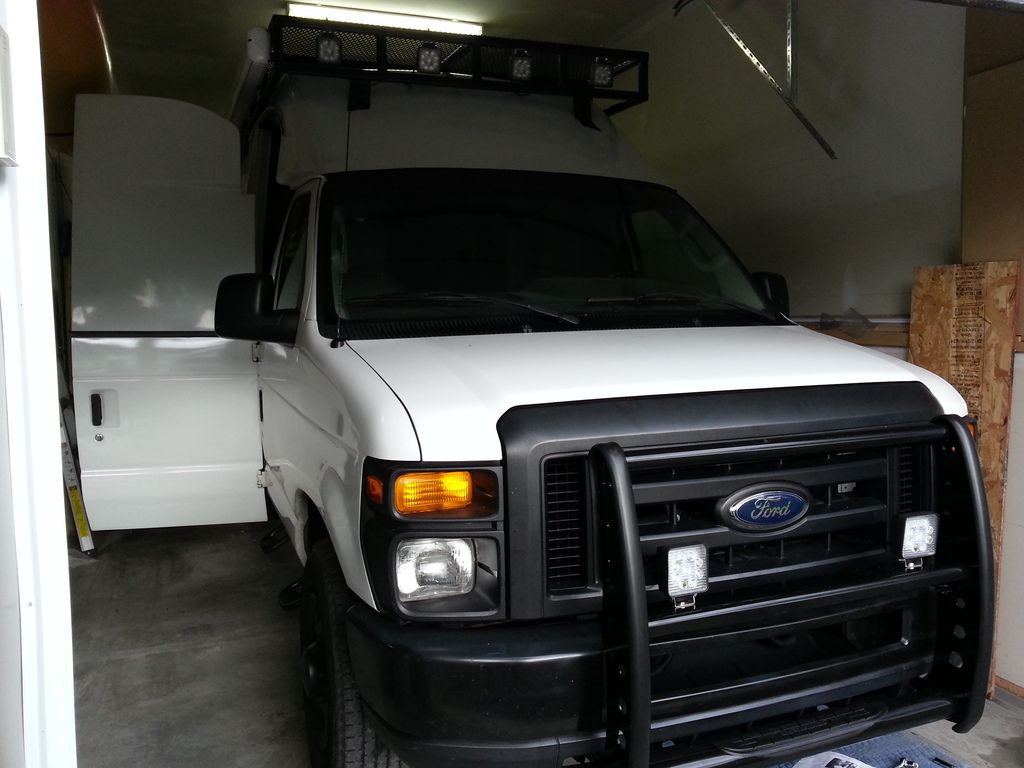
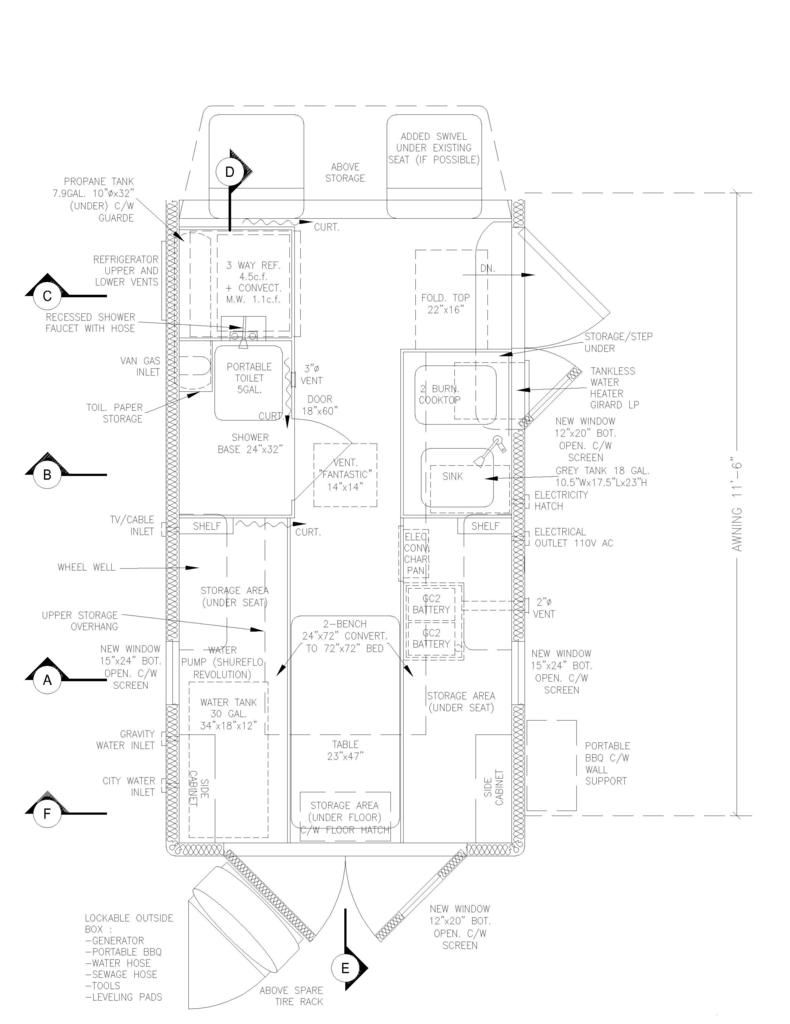
Right now I'm working on my shower/bathroom.
Before you ask I have a 5 gallon porta potti, so no plumbing and no black tank.
My shower base/floor will be covered with fiberglass (another thing I never done before but I think I'll be ok)
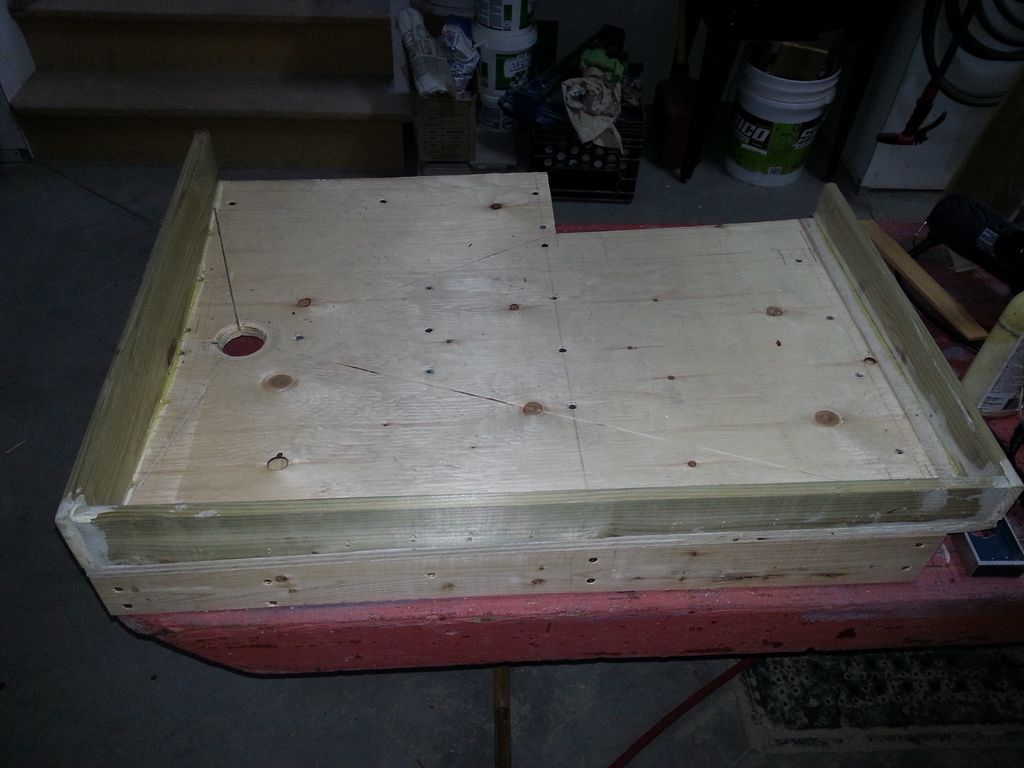
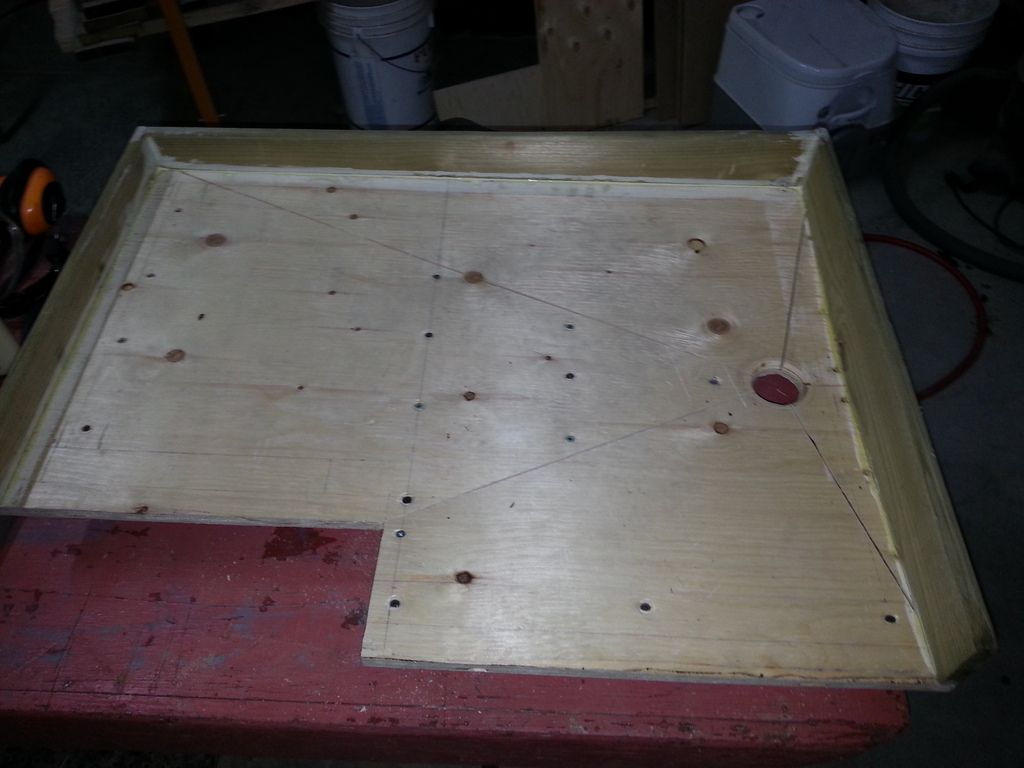
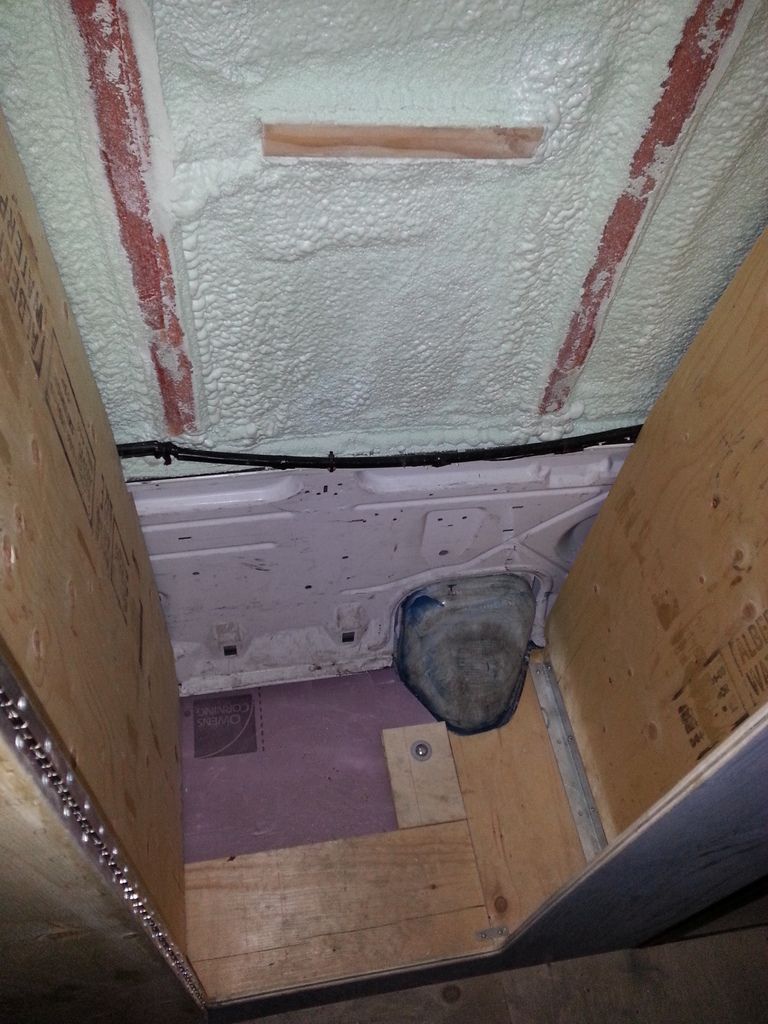
The outside insulated wall will be covered with 3/8" thick plywood and I will glue some plastic sheeting with plastic corners and tons of silicone.
The top wall will curve to meet the ceiling, I will use flexible loan plywood.
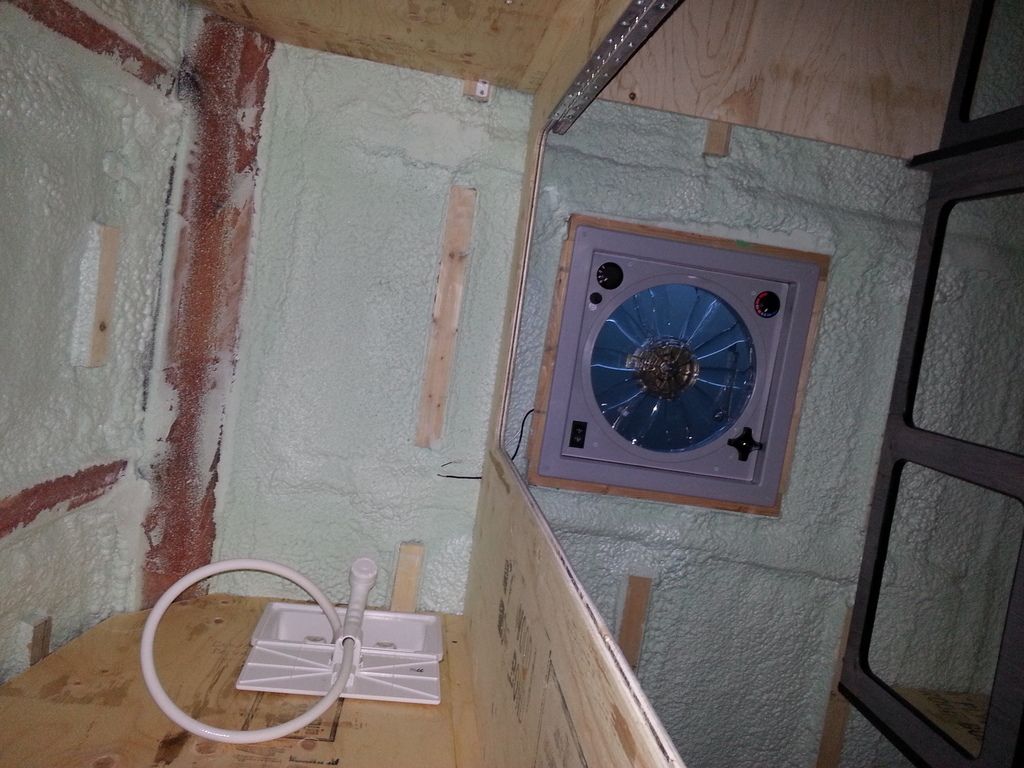
As you can see the Fantastic vent is inches away so I will only install a transfer grill on the shower wall.
I will be adding a small storage cabinet on the van's gas inlet bump (same height as the porta potti) and I will install a marine hatch on the side (I will remove the bag) and use it for toilet paper storage and porta potti chemicals. Initially I planed on putting a small corner sink with faucet on the cabinet but the kitchen sink is literally 2 feet away so...

This is the lighting fixture I bought, 46LEDs 5"diam, I will be adding clear silicone to make it waterproof.

These are the accessories I plan on using.
Toilet paper cover with soap tray

Shampoo dispenser

Extendable pole for hanging wet close/bathing suits/towels etc...

I also plan on installing a shower curtain that you close when taking a shower, to prevent water from getting through the gaps around the door.
That's about it, am I forgetting anything? do you have any comments or useful advice? Thanks!
DIY conversion build, extended 2010 Ford 5.4L E250 + high top, from Montreal Canada, new to all this so please be patient and clear with me (never built or camped in a van yet)
- Mark as New
- Bookmark
- Subscribe
- Mute
- Subscribe to RSS Feed
- Permalink
- Report Inappropriate Content
Apr-20-2016 10:27 PM
2014 BoonHauler 3614
- Mark as New
- Bookmark
- Subscribe
- Mute
- Subscribe to RSS Feed
- Permalink
- Report Inappropriate Content
Apr-20-2016 09:56 PM
2014 Ram 2500 diesel 4x4
Guarded by 2 Jack Russells
- Mark as New
- Bookmark
- Subscribe
- Mute
- Subscribe to RSS Feed
- Permalink
- Report Inappropriate Content
Apr-20-2016 09:50 PM
The base is made of 2"x2" 2"x3" and 2"x4" drowned in carpenter's glue with 3" screws.
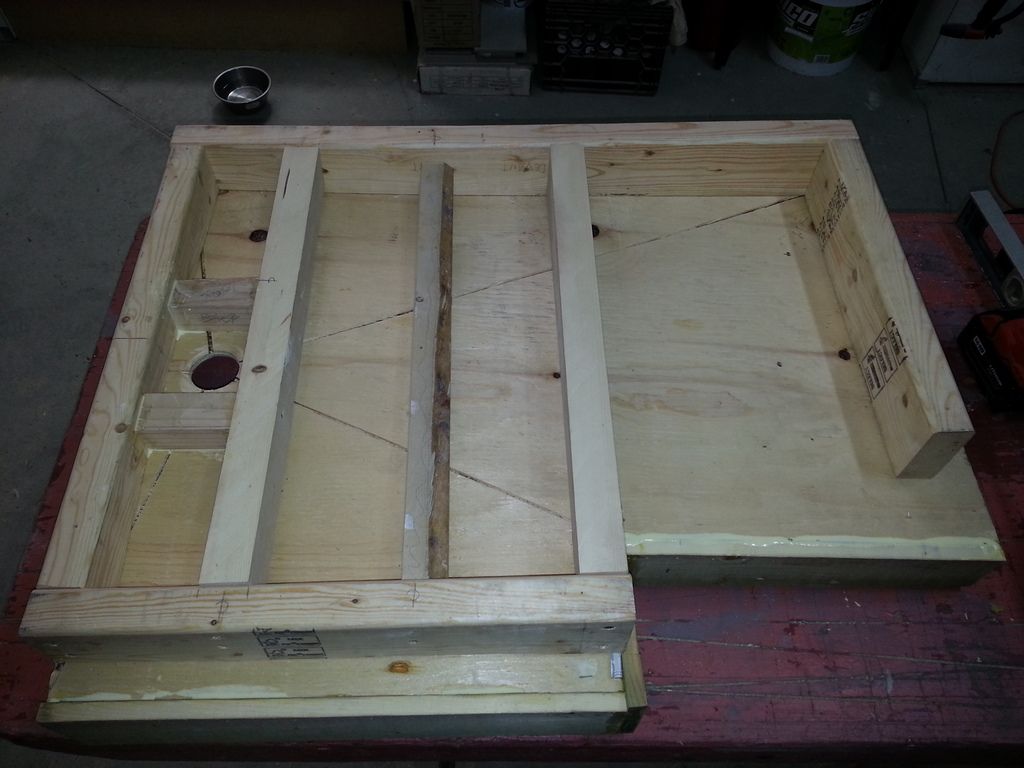
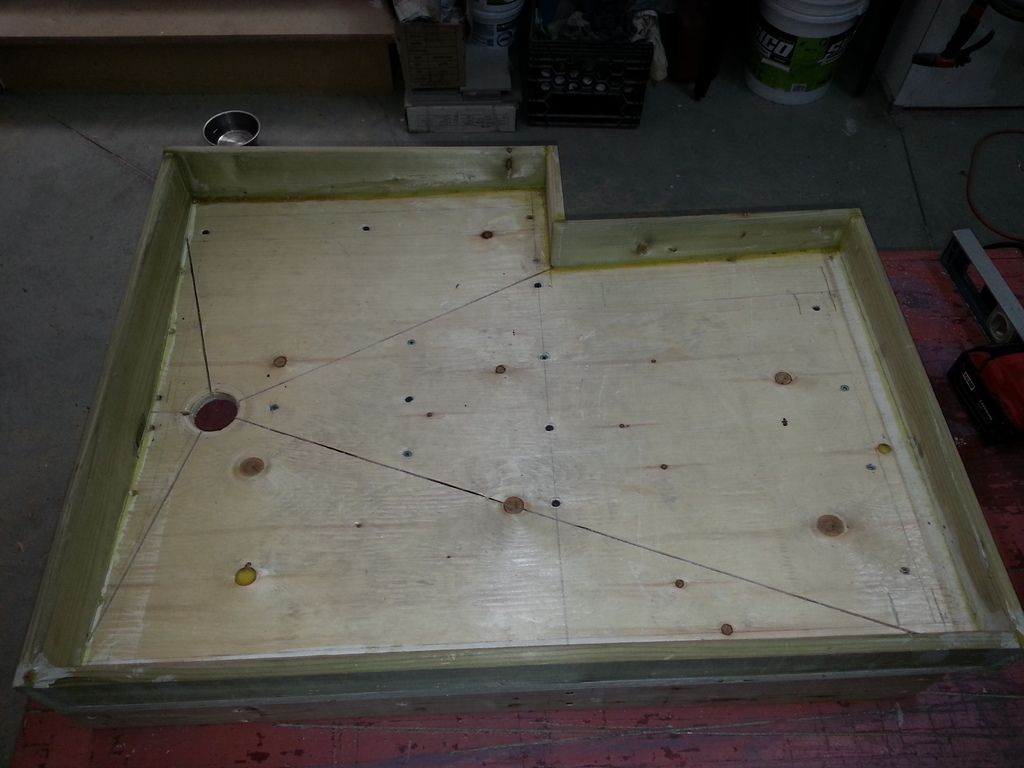
DIY conversion build, extended 2010 Ford 5.4L E250 + high top, from Montreal Canada, new to all this so please be patient and clear with me (never built or camped in a van yet)
- Mark as New
- Bookmark
- Subscribe
- Mute
- Subscribe to RSS Feed
- Permalink
- Report Inappropriate Content
Apr-14-2016 11:44 AM
It gives you a 24x24 mini tub to stand in, plenty big enough for a shower. It's flexible plastic so it can take some abuse where fiberglass will just crack. A distinct advantage is it's deep to contain the water better than a shallow shower pan. Plus it has a lip that you can install the plastic paneling over, so no excessive gobbing of silicone.
Putting 10-ply tires on half ton trucks since aught-four.
- Mark as New
- Bookmark
- Subscribe
- Mute
- Subscribe to RSS Feed
- Permalink
- Report Inappropriate Content
Apr-14-2016 09:27 AM
Floor has definite camber to allow fast draining. I used Teak slats and the ship's carpenter made a removable two-piece floor rack. Absolutely slip proof. And the slats are level.
Also with teak a flop-down seat is worth it's weight in gold. The shower wall needs heavy reinforcement to support the load. I used 1" square tubing.
I hang towels from the ceiling and a spring clip. Washcloth too.
I use my (portable) Fantastic Endless breeze fan to help dry the bathroom.
- Mark as New
- Bookmark
- Subscribe
- Mute
- Subscribe to RSS Feed
- Permalink
- Report Inappropriate Content
Apr-13-2016 11:05 PM
Main areas of concern; where the walls meet, where the pan meets the drain flange, where the walls meet the pan.
The grey vinyl liner as shown provides no wall waterproofing which you will need.
2014 Ram 2500 diesel 4x4
Guarded by 2 Jack Russells
- Mark as New
- Bookmark
- Subscribe
- Mute
- Subscribe to RSS Feed
- Permalink
- Report Inappropriate Content
Apr-13-2016 08:56 PM
I will add a piece of wood cut at an angle and I will use it to pin the shower base to the floor, and I will run the plastic sheeting over it without gluing it.
And If anything happens I can easily mechanically remove the shower base.
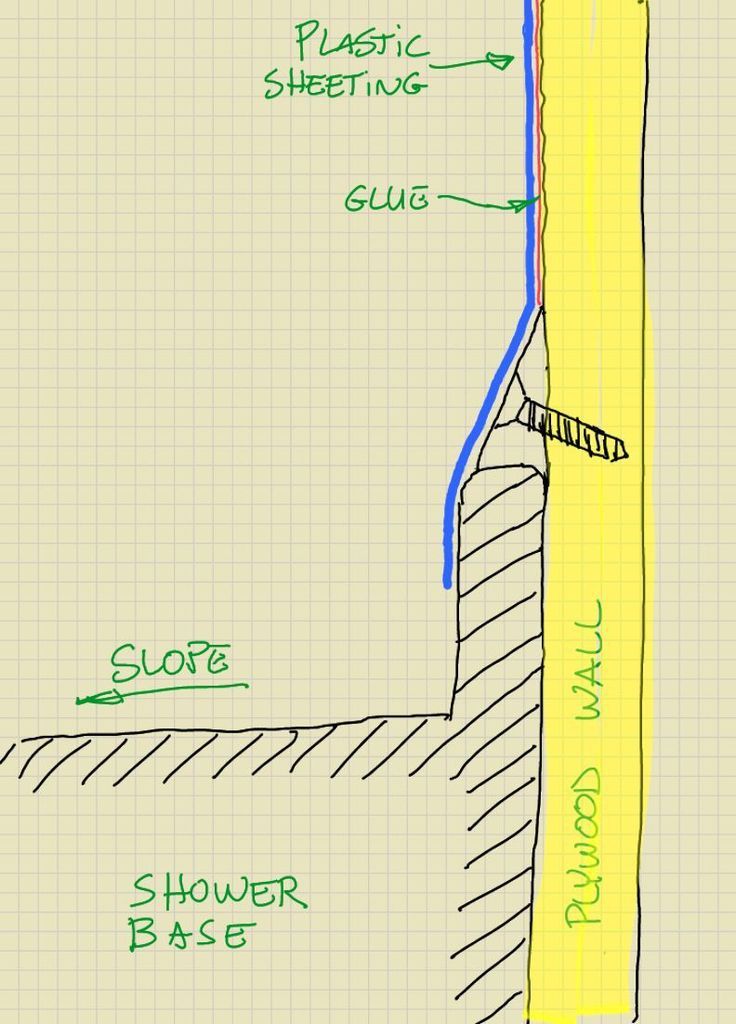
DIY conversion build, extended 2010 Ford 5.4L E250 + high top, from Montreal Canada, new to all this so please be patient and clear with me (never built or camped in a van yet)
- Mark as New
- Bookmark
- Subscribe
- Mute
- Subscribe to RSS Feed
- Permalink
- Report Inappropriate Content
Apr-13-2016 08:51 PM
is it friday yet? wrote:
The wall needs to come over the shower base, then you shouldn't need silicone. Build the wall out further or make the shower pan smaller on the vertical.
I would tend to agree with Friday. That detail looks like a leaker to me.
Just my two cents
2014 BoonHauler 3614
- Mark as New
- Bookmark
- Subscribe
- Mute
- Subscribe to RSS Feed
- Permalink
- Report Inappropriate Content
Apr-13-2016 06:44 PM
2015 Grand Design Momentum 328M, disc brakes, Progressive Industries 50 amp EMS
- Mark as New
- Bookmark
- Subscribe
- Mute
- Subscribe to RSS Feed
- Permalink
- Report Inappropriate Content
Apr-13-2016 06:24 PM
DrewE wrote:
Commonly in shower enclosures in RVs (and probably in other applications) the wall panels extend down over and in front of the lip of the base a few inches, with no sealant between the two. That allows for some movement of them relative to each other. Caulked joints don't last well when there's much movement at all (at least with traditional caulking materials like silicone), and any slight twisting of the vehicle chassis will cause movement between the base and the walls. There's probably less slop in a van chassis than a typical class C or A motorhome chassis, but I suspect still more than in a house.
There's no real need to put plastic on the ceiling IMHO. It's not harmful, just unnecessary. If water is dripping onto your ceiling, you have bigger issues than a wet ceiling.
Be aware that once silicone is cured essentially nothing will stick to it. This includes more silicone. Resealing a silicone joint requires removing every bit of existing silicone and thoroughly cleaning the area and is a major pain. Other sealants may be more suitable; I've generally had good success with OSI Quad, though I have not tried it in any bathroom or other interior applications.
Depending on your height and the interior space, you may want to consider a ceiling-mounted track for the curtain rather than a rod for greater headroom when entering and exiting the bathroom. Having the exhaust fan not be in the shower compartment itself is actually not a bad thing, in my opinion, as turning on such a fan in a tight shower stall tends to cause the curtain to blow in and stick to one's body. Having it tend to waft outwards is pleasanter.
I assume you've probably thought of this, but just in case you have not: put in a towel bar somewhere. I like to believe that a towel is less likely to slip off of a square one (such as I've installed in my motorhome) than a round one, but I'm not sure that it actually makes any difference.
Edit: if you leave the shower compartment door open while showering (and use just the curtain to keep water where it belongs), the inside of the bathroom compartment door would be a decent place to hang a towel. If you have it some other place in the van to dry, you could just toss it on your kitchen counter or something before stepping in the shower and reach it when you need to dry off.
Here's a quick drawing of how I planned on doing this, So you're saying that the flexing of the vehicle when in movement will crack the joints and they won't be waterproof anymore? Also I'm not using the right material (silicone)?

DIY conversion build, extended 2010 Ford 5.4L E250 + high top, from Montreal Canada, new to all this so please be patient and clear with me (never built or camped in a van yet)
- Mark as New
- Bookmark
- Subscribe
- Mute
- Subscribe to RSS Feed
- Permalink
- Report Inappropriate Content
Apr-13-2016 06:07 PM
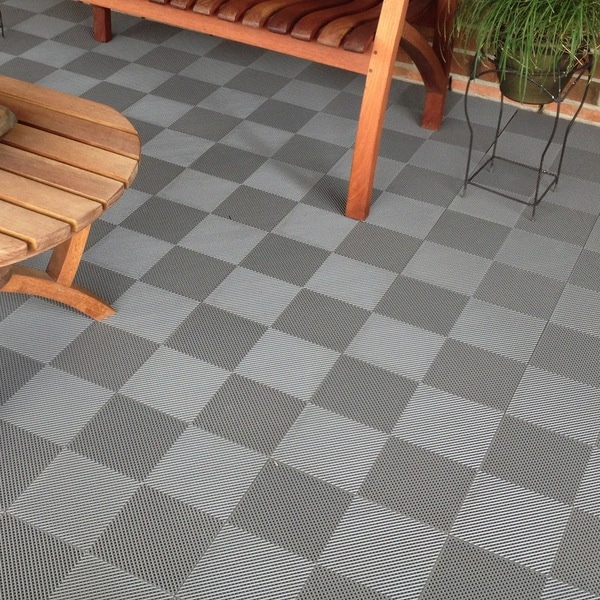
2015 Grand Design Momentum 328M, disc brakes, Progressive Industries 50 amp EMS
- Mark as New
- Bookmark
- Subscribe
- Mute
- Subscribe to RSS Feed
- Permalink
- Report Inappropriate Content
Apr-13-2016 05:13 PM
is it friday yet? wrote:
Use this on your shower floor. I used this product in my house addition for the shower and it hasn't leaked at all. This is an image I found on Google. They sell it at Home Depot, Lowes, etc...
Isn't that a shower membrane they use when they make a ceramic shower?
DIY conversion build, extended 2010 Ford 5.4L E250 + high top, from Montreal Canada, new to all this so please be patient and clear with me (never built or camped in a van yet)
- Mark as New
- Bookmark
- Subscribe
- Mute
- Subscribe to RSS Feed
- Permalink
- Report Inappropriate Content
Apr-13-2016 04:55 PM
2015 Grand Design Momentum 328M, disc brakes, Progressive Industries 50 amp EMS
- Mark as New
- Bookmark
- Subscribe
- Mute
- Subscribe to RSS Feed
- Permalink
- Report Inappropriate Content
Apr-13-2016 04:12 PM
There's no real need to put plastic on the ceiling IMHO. It's not harmful, just unnecessary. If water is dripping onto your ceiling, you have bigger issues than a wet ceiling.
Be aware that once silicone is cured essentially nothing will stick to it. This includes more silicone. Resealing a silicone joint requires removing every bit of existing silicone and thoroughly cleaning the area and is a major pain. Other sealants may be more suitable; I've generally had good success with OSI Quad, though I have not tried it in any bathroom or other interior applications.
Depending on your height and the interior space, you may want to consider a ceiling-mounted track for the curtain rather than a rod for greater headroom when entering and exiting the bathroom. Having the exhaust fan not be in the shower compartment itself is actually not a bad thing, in my opinion, as turning on such a fan in a tight shower stall tends to cause the curtain to blow in and stick to one's body. Having it tend to waft outwards is pleasanter.
I assume you've probably thought of this, but just in case you have not: put in a towel bar somewhere. I like to believe that a towel is less likely to slip off of a square one (such as I've installed in my motorhome) than a round one, but I'm not sure that it actually makes any difference.
Edit: if you leave the shower compartment door open while showering (and use just the curtain to keep water where it belongs), the inside of the bathroom compartment door would be a decent place to hang a towel. If you have it some other place in the van to dry, you could just toss it on your kitchen counter or something before stepping in the shower and reach it when you need to dry off.





